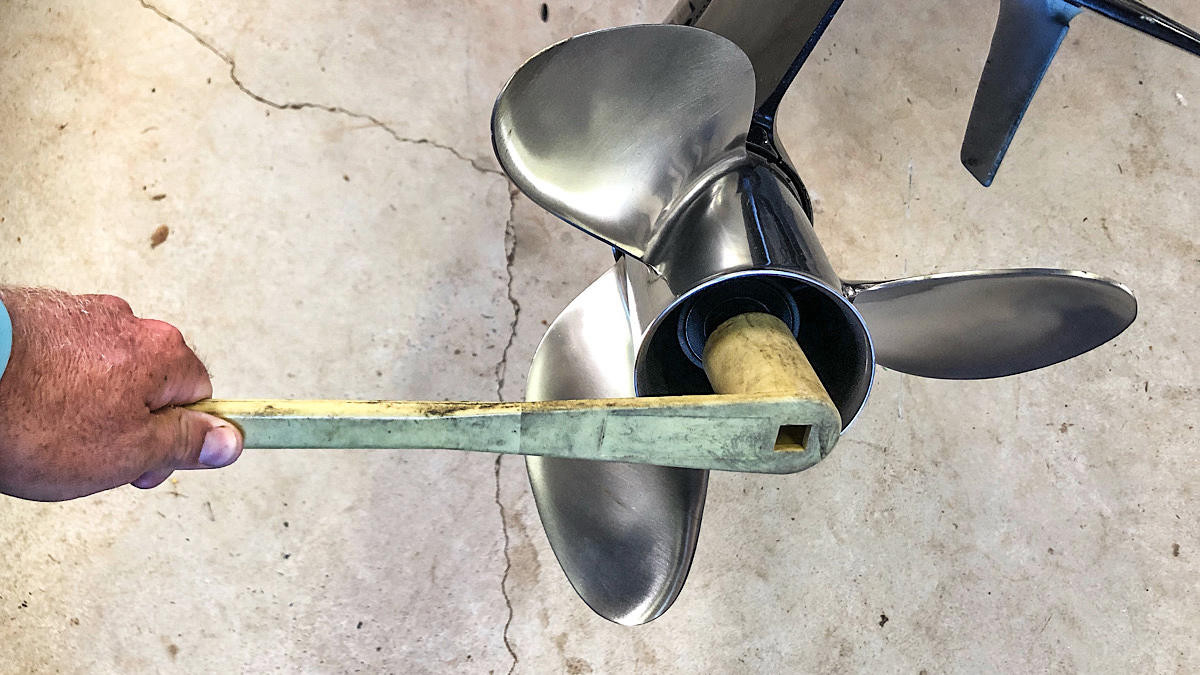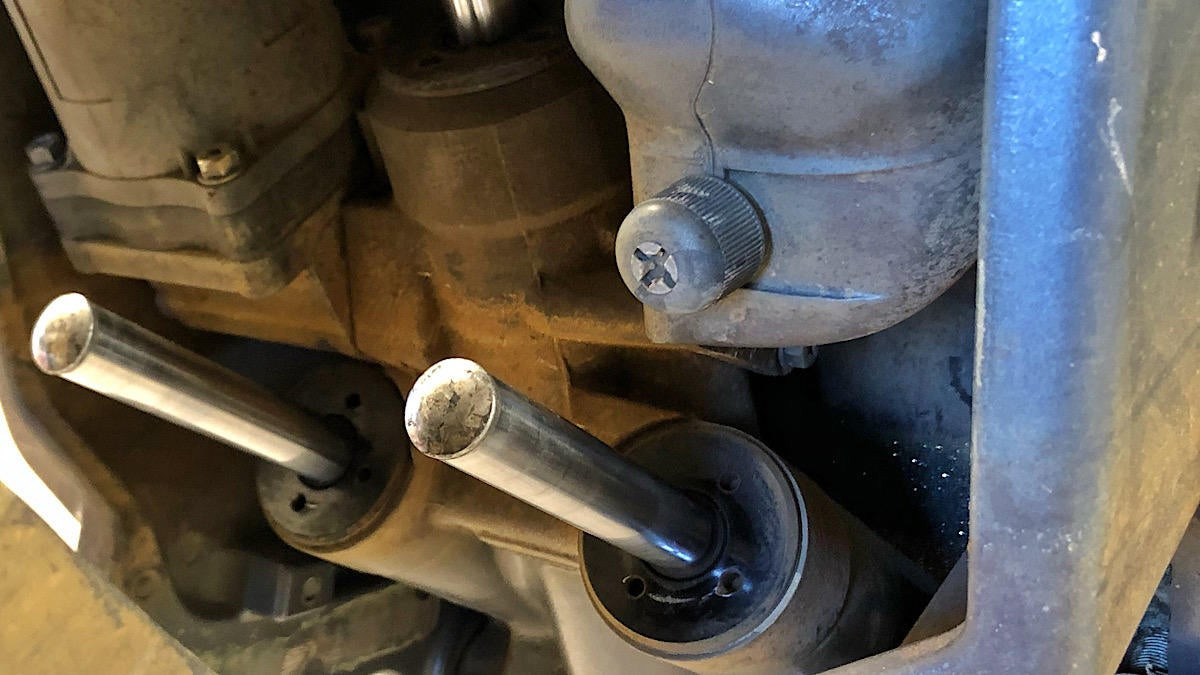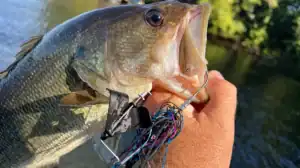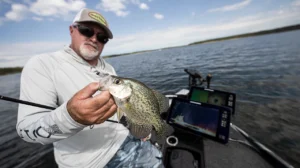Having spent a good bit of time hauling a bass fishing boat around the country both fishing tournaments and covering them, I’ve learned several lessons the hard way. The lessons I enjoy learning far more, however, came through someone else’s experiences. So today, I’d like to share a few stories from my past in hopes you’ll heed these warnings and learn from my mistakes.
Always be ready to change a tire
You older fellas out there would think this one’s a no-brainer. Heck, even a younger angler who has spent any time on the road much will know that a tire is one of the weak links on a truck and trailer and it’s only a matter of time before one needs changing. But there are a few tricks that can make the process far more doable when the time comes.
Let’s start off with a story, though.
I was 16 years old and my dad and I had a club tournament on our local lake. He had just bought a new boat, the one he still has today, and the offer they made for him to trade in his 1996 374 Ranger was so low he just decided to keep it and give it to me. Yes, I know… a ridiculously nice boat for a 16-year-old kid but another building block in the foundation to the career I enjoy now, so thanks for that one, pops.
Anyway, we’re driving up our driveway, me pulling my boat in front of him pulling his and I got a little far to the right where we had a pipe running beneath the drive. The tire went off the side, hit the end of a cross tie, which crimped the rim and flattened the tire immediately. Not a good way to start the morning. There was no way to pump the tire back up with the rim damaged, so it was time to change it out.
The first lesson I learned is to always be sure to have a jack. I did not. So I set off walking back down our 100-yard long driveway to get a floor jack from my dad’s shop and proceeded to drag it back up the hill to the boat. This was actually a blessing compared to something like being on the side of an interstate without one.
Most vehicles have a small bottle jack usually located behind or under the back seat and they will usually work in a pinch. Another great tip if you have a dual axle trailer is to pull the good tire up onto something; use a wooden block or even a curb in a parking lot to elevate the good tire, which will also raise the damaged tire off of the ground so you can remove it.
A couple more quick tips before we move onto something else, always break the lug nuts free before jacking the tire up. Otherwise you’ll try to turn them and the wheel will turn. When you put the spare tire on, be sure the rim is seated flush and then snug your lug nuts in a specific order. Whichever one you snug first, snug one across from it next. This helps ensure the tire isn’t mounted crooked. Then continue to alternate as you go, snugging each lug nut fairly tight. Then let the tire back down onto the ground and give each lug nut one more effort now that the ground is able to keep the tire from spinning.
Be ready to change a propeller hub
This one almost cost me big. I was fishing an Everstart (now Toyota Series) on Lake Guntersville. It was day two. Day one had resulted in a monumental moment in my competitive fishing, a 26-pound, 4-ounce bag, which was my biggest bag to date and still my second biggest stringer ever. Needless to say, I was feeling pretty good about life on day two with another 17 pounds in the boat and working to cull up. Then, I sat down to take off, cranked the engine, hammered down and… nothing.
The engine revved up, but the boat didn’t go anywhere. So, I trimmed the motor up as high as it would go and went to the back of the boat and saw that the prop was still there. That was a good sign. The only other thing I could think of checking next was the hub. A buddy of mine had spun his hub recently and that led me to put a spare in the boat.
Just to clarify what a hub is for anyone who doesn’t know, it serves as an intentional weak point between the prop and the drive shaft and gears within the lower unit. It’s designed to absorb the shock of shifting gears and, in the event you hit something with the prop, the hub will hopefully fail to protect all the other more valuable, harder-to-fix inner workings of the motor. This is what leads to a spun hub.
So back to the story, I had a spare hub, but no prop wrench. I call the tournament director to ask if I can call a nearby buddy to bring me some tools. He okays it and I call Casey Martin who was also in the tournament. He runs over, hooks me up with a prop wrench and a few more tools and I’m able to get the prop off and the new hub on the motor without ruining one of the best tournaments I had have ever had in my life. But it sure was a close call.
Here are a few things to consider keeping in the boat for such an occasion. You’ll need a set of pliers to pull the pin out of the prop shaft, a big wrench to remove the prop nut and then a spare hub, specific to your motor. It’s also a good idea to have a spare prop in the boat. I know those can be really expensive, so that’s not always an option. But a spare hub is usually around $30, so it’s definitely a worthwhile investment in case you ever need it.
Don’t get let down by a faulty trim
Well this is one from way back in the memory banks that still stings a little some 25 years later. My dad and I used to go way up a creek in our Wednesday night derbies; so far that he would just “trim her out and let her eat” for about a mile then shut down in one little pothole he knew about that was way up the creek. It was so shallow that we’d have to trim the motor all the way out of the water as we fished our way back down the creek.
This seems a little dangerous and ill advised, I get that. But it was a great way to catch big ones at the time. I was maybe 9 or 10 at the time, so my job consisted of holding on and consuming cookies and Kool-Aid primarily, with the occasional nap and 5-pounder mixed in.
So we’re way up the creek. Dad and I (mostly dad) proceed to put together a bag over 20 pounds during the next 3-hour float back down. As we make our way to where we’ll be able to jump back on plane, just in time to get back for the 10 p.m. weigh-in, dad goes to trim the motor back down into the water and… nothing.
The trim isn’t working. Sometimes, that can mean just the button you’re trying to use has gone bad. So dad tried all three trim buttons, but still nothing. Then he remembered there’s a release somewhere on the motor where, if this particular screw is loosened, the weight of the motor itself will lower it back down into the water. Unfortunately, it’s 9:30 at night, he’s standing in knee-deep water with a dim flashlight that predated LED by 15 years and he’s starting to teach me a new vocabulary that mom’s not going to be all that excited to hear I’ve learned. So finding this little fail-safe screw isn’t happening.
First lesson, go ahead and locate that trim release screw right now if you have an outboard motor; I believe almost all of them have one. And it’s better to know where yours is before you need to know where it is. Some of the older models are actually under the water line when the boat is in the water, which is what turned out to be the case with dad’s that night and explained why he couldn’t find it.
And since he couldn’t find it, our night ended with a 5-mile trek back to the ramp on the trolling motor. Again, this was 25 years ago, so there were no cell phones. We were literally up the creek but thank the Lord for the trolling motor at least. I laid down in the boat and took a nap. Dad got us back to the ramp sometime in the middle of the night. And we learned that lesson the hard way.
I heard it said recently, “Wise people learn from their mistakes but wiser people learn from the mistakes of others.”
It’s definitely a good idea to be ready for these three things if you own a boat or even just fish out of one sometimes with a buddy. I can promise you that things are going to happen; equipment will fail and mistakes will be made. It’s best to have a game plan and the tools necessary to execute it. Learn from my mistakes, you’ll be glad you did.













